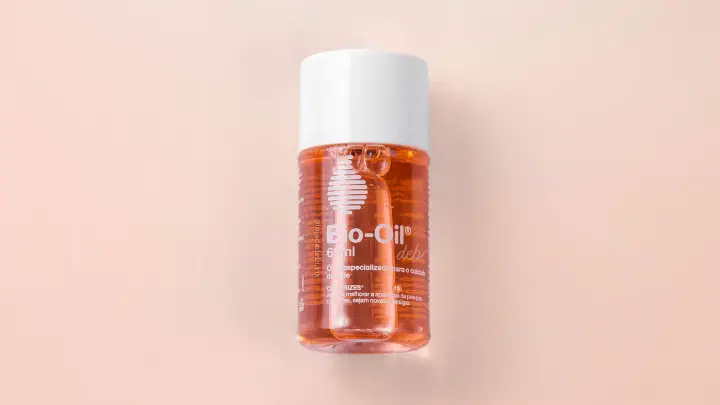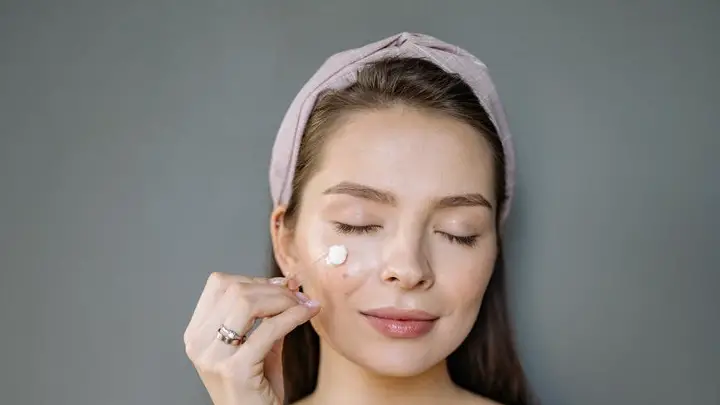As for skincare enthusiasts, we’re always on the hunt for the next big active ingredient that we can use to transform our skin. So if you’re looking for a new ingredient to add to your routine, look no further than niacinamide (also known as vitamin B3).
Niacinamide is a multitasking ingredient that works wonders on the skin, especially when it’s used properly. That’s right: like any other skincare active, niacinamide has its own set of rules and limitations.
Ready to learn all about it? Here’s what you need to know before adding this ingredient to your routine.
What Is Niacinamide in Skin Care?
Niacinamide is a water-soluble form of vitamin B3 that you can find in many skincare products. It’s sometimes called nicotinic acid or nicotinamide.
This versatile ingredient can help improve the health of your skin in several ways. It’s an antioxidant, which means it can protect your skin from environmental damage caused by free radicals.
It’s also anti-inflammatory, which means it may help reduce acne breakouts and redness around the pores. Niacinamide also helps reduce the appearance of fine lines and wrinkles, treat hyperpigmentation, and strengthen the skin’s barrier function.
Niacinamide can be used on all skin types, including sensitive skin. It is also gentle enough to be used in the morning and at night every day.
Why Is Niacinamide Important in Skin Care?
Niacinamide is an essential nutrient and powerful ingredient that can benefit your overall skin health—and it’s suitable for all skin types.
The body doesn’t create niacinamide naturally, so you have to get it through skincare products or from your diet to get all of its amazing benefits.
Look for it in cleansers, moisturizers, toners, and serums. Manufacturers mostly pair it with other beneficial ingredients, such as hyaluronic acid, peptides, and antioxidants.
These ingredients help protect against free radicals, reduce signs of aging, and keep skin soft, smooth, and hydrated.
What Are the Benefits of Using Niacinamide in Skin Care?
It helps with anti-aging
According to a 2005 study, niacinamide can help stimulate collagen and elastin production. Collagen is a protein that gives your skin strength and structure, while elastin is a protein that allows your skin to stretch.
The more your skin produces these proteins, the less likely you are to see wrinkles and sagging in your complexion over time.
Increases hydration
Niacinamide also works by increasing ceramides, which are lipids naturally present in your skin to help strengthen your skin’s barrier function. This prevents water loss from the skin and increases hydration levels.
Prevents sun damage
Niacinamide can also help to prevent damage caused by environmental stressors such as sun rays. It’s a powerful antioxidant that helps protect your skin from free radicals (unstable molecules that can cause signs of aging) present in sun rays.
It can help decrease oil production
Niacinamide can help decrease sebum (oil) production by reducing oil gland size and activity. It also helps reduce the appearance of enlarged pores, which can help improve the overall texture of your skin.
Reduces redness and inflammation
Niacinamide can also help to reduce inflammation associated with skin conditions, such as rosacea and eczema. By using niacinamide to take care of your skin, you can reduce the severity of these skin conditions.
Decreases hyperpigmentation
Niacinamide helps to lighten hyperpigmentation (dark spots caused by an excess production of melanin in the skin) by reducing the production of melanin in the skin.
It’s great for acne-prone skin
Niacinamide also acts as an antibacterial to help reduce the amount of acne-causing bacteria on the surface of your skin. Additionally, it can help reduce inflammation that can make pimples red and painful.
Who Should Use Niacinamide?
You should use niacinamide if:
- You have an uneven skin tone
- Your skin is flaky or rough from dryness
- You have large pores or oily skin
- You have hyperpigmentation (acne scars, sun spots, or melasma)
- You’re suffering from acne, rosacea, or eczema
- You have fine lines and wrinkles
What Are the Side Effects of Using Niacinamide on Skin?
Niacinamide is generally considered safe to use on all skin types. The only side effect of using niacinamide is a slight tingling or burning sensation when you first apply it.
However, if you are new to using niacinamide, dermatologists recommend doing a patch test before applying it to larger areas of your skin.
Apply a small amount of the product containing niacinamide to a patch of skin on the inside of your elbow. Monitor that area for 24 hours to make sure you don’t have any sensitivity or allergic reaction to the product.
If you do, stop using niacinamide and call your doctor or dermatologist. They can examine your symptoms and prescribe a better alternative.
How to Apply Niacinamide on Your Skin
- Rub your favorite gentle cleanser into your skin until you’ve washed away excess dirt and oil.
- Apply toner to remove any traces of cleanser or dirt that is still on your skin after cleansing.
- Apply your niacinamide product to your face and neck area using your fingertips. The product will absorb into your skin quickly if applied correctly.
- Wait for 15-20 minutes then follow up with a moisturizer and sunscreen (if using).
How Often Should You Use Niacinamide on Your Skin?
Twice a day. Niacinamide works with all skin types, including sensitive skin, and can be applied twice a day every day.
However, this may vary depending on the concentration of the product and any additional ingredients.
For example, products that have less than 10% niacinamide are safe to use twice a day, while products with 10–20% concentration should be used every other day.
Products containing over 20% concentration should only be used once a week or as directed by a dermatologist.
To ensure the best results and avoid irritation, do not combine niacinamide products with other types of exfoliating skincare products such as lactic acid and glycolic acid. Also, avoid applying niacinamide to broken skin or open wounds.
FAQs
How much niacinamide should you use on your skin?
A good rule of thumb is to use 5% niacinamide for general uses and up to 10% for specific skin concerns. The amount of niacinamide in products varies greatly, from 1% up to 100%, and will be clearly labeled on the ingredients list.
Can you use niacinamide to treat acne?
Yes, you can. Niacinamide is especially beneficial for those who are acne-prone, as it helps reduce oil production, inflammation, and redness.
The best part is that it does this without causing dryness or flakiness that can come from using other acne treatments such as salicylic acid and benzoyl peroxide.
Can you use niacinamide with vitamin C?
Yes, you can. Niacinamide and vitamin C are two of the most effective skincare ingredients that research has proven to have great results when used together.
Vitamin C is not only an antioxidant, but it also stimulates collagen production in the skin and has skin-brightening benefits, like dark spots and sunspots.
Can you use niacinamide in the morning?
Yes, you can. You can use niacinamide at any time of the day as it doesn’t make your skin more sensitive to sunlight. You can layer it under sunscreen in the morning to protect your skin from environmental damage caused by free radicals.
Conclusion
Niacinamide is a form of vitamin B3 that you can get through your diet, but the benefits it provides for the skin are only available when you apply it topically.
It’s an all-rounder, helping to ease inflammation, minimize pore appearance, strengthen the skin barrier and fight free radicals.
This makes it an ideal ingredient for many types of skin concerns, including hyperpigmentation, acne, and aging skin.
Thanks for reading.
Visit Serum101 if you’re interested in learning more about this ingredient and its benefits.







